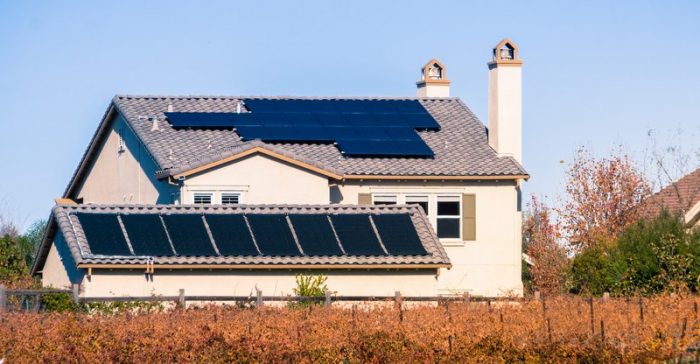California, a pioneer in renewable energy initiatives, has consistently pursued ambitious goals to reduce its carbon footprint and transition towards a sustainable future. In line with these efforts, the state’s Public Utilities Commission (CPUC) is considering significant modifications to its Virtual Net Energy Metering (VNEM) program. These proposed changes could have a far-reaching impact on multi-family homes, both those with existing solar installations and those contemplating adding solar in the future. Understanding the implications of these changes is crucial for multi-family property owners to make informed decisions and protect their investments in solar power.
Understanding Virtual NEM (VNEM): A Program for Shared Solar Benefits
The VNEM program was introduced in California to address the challenges of solar adoption in multi-family dwellings. Traditional net metering, where solar generation offsets individual electricity bills, is not feasible in multi-tenant buildings due to shared utility connections. VNEM addresses this issue by allowing multi-family property owners to generate solar power and share the benefits with their tenants. Under VNEM, tenants receive credits for the solar energy they consume, even if they don’t have their own solar panels. This innovative approach has proven effective in promoting solar adoption and reducing electricity costs for tenants in multi-family settings.
Proposed Changes to VNEM: A Cause for Concern
Despite the success of VNEM, the CPUC is considering several amendments to the program, raising concerns among multi-family property owners and solar advocates. These proposed changes include:
Reduced Project Size: The CPUC proposes to lower the maximum size of VNEM projects from 5 megawatts (MW) to 500 kilowatts (kW). This significant reduction would effectively exclude smaller multi-family properties, such as duplexes and triplexes, from participating in VNEM.
Limited Projects per Property: The CPUC intends to restrict the number of VNEM projects that can be located on a single property. This limitation would curtail the ability of larger multi-family properties to generate and share solar power, hindering their efforts to reduce their environmental impact and lower electricity costs.
New Pricing Structure: The CPUC plans to implement a new pricing structure for VNEM that would impose charges on property owners for electricity consumption from the grid during peak hours. This change could lead to increased electricity bills for property owners, potentially offsetting the savings achieved through solar generation.
Impact on Multi-Family Homes: A Multifaceted Challenge
The proposed changes to VNEM could have a multifaceted impact on multi-family homes, affecting both existing VNEM participants and those considering solar adoption.
Existing VNEM Participants: For property owners already enrolled in VNEM, the proposed changes could translate into higher electricity bills and diminished benefits from solar power. The reduced project size and limited projects per property could constrain their ability to generate enough solar energy to offset their electricity consumption, leading to increased reliance on the grid and higher costs.
Potential VNEM Participants: For multi-family properties considering adding solar, the proposed changes could make the investment less attractive and more expensive. The reduced project size and new pricing structure could raise the upfront costs of solar installations and reduce the potential savings on electricity bills.
Navigating the Impact: A Proactive Approach
In light of the proposed changes to VNEM, multi-family property owners can take proactive steps to navigate the impact and protect their investments in solar power:
Stay Informed: Keeping up-to-date with the latest VNEM developments is crucial. Property owners should regularly check the CPUC’s website and follow news releases to stay informed about the status of the proposed changes and any potential modifications.
Evaluate Options: Working with a reputable solar energy contractor can provide valuable insights into alternative options for generating and sharing solar power under the new Virtual NEM (VNEM) rules. A thorough evaluation of the available options can help property owners make informed decisions that align with their specific needs and goals.
Prioritize Energy Efficiency: Investing in energy efficiency upgrades can significantly reduce a property’s electricity consumption, thereby reducing reliance on the grid and potentially mitigating the impact of the proposed VNEM changes. By implementing energy-efficient measures, property owners can enhance their overall energy performance and potentially lower their electricity costs.
Advocate for Change: Engaging with the CPUC and elected officials to express concerns about the proposed changes to VNEM is an important step. By advocating for modifications or alternative approaches, property owners can contribute to shaping a more equitable and sustainable solar energy landscape in California.
Conclusion: Embracing Solar Power in a Changing Landscape
The proposed changes to Virtual NEM (VNEM) present challenges for multi-family property owners, but they also offer opportunities to explore innovative solutions and advocate for a sustainable future. By staying informed, evaluating options, prioritizing energy efficiency. Looking for Solar Panel Installation Bay Area? Look no further than Nabu Energy.

